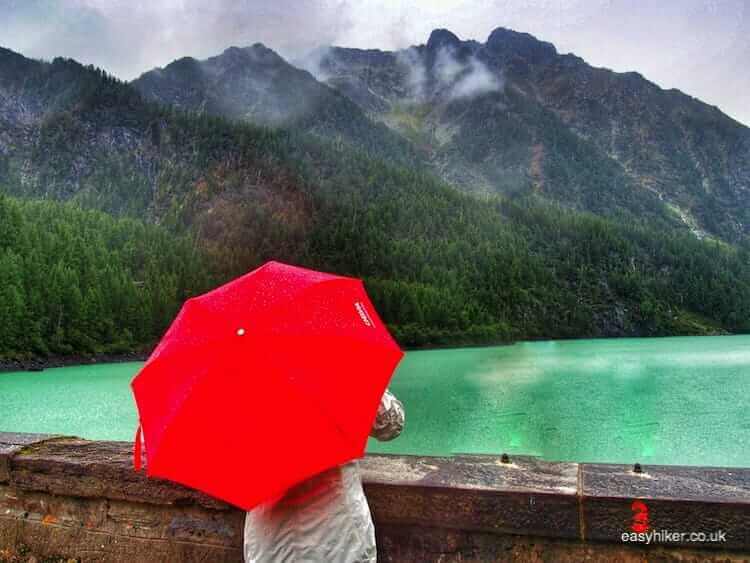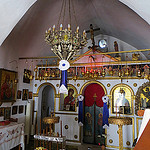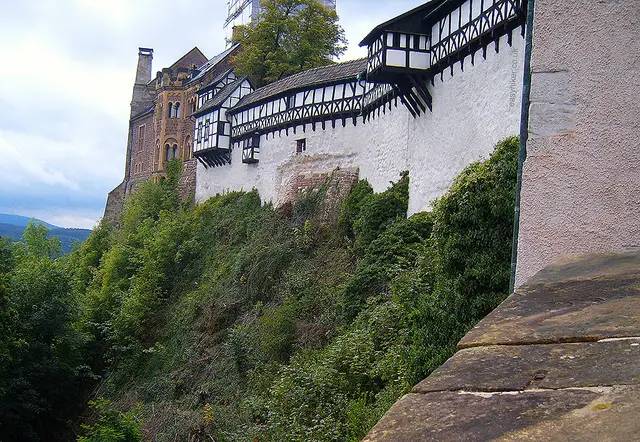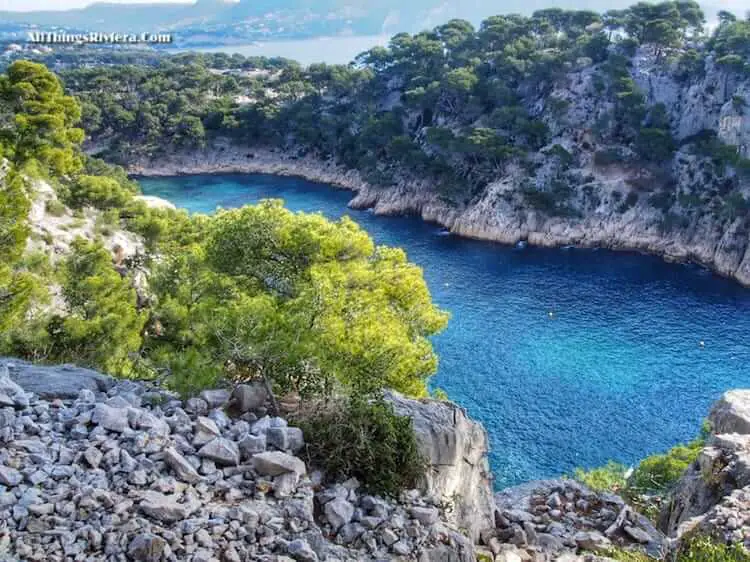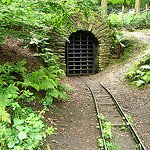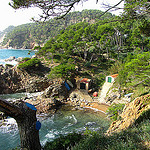Having followed a dried-out river for our last post, we will today explore a dried-out wetlands preserve.
The rain in Spain – the little there has been over the past five years – has, it seems, mainly fallen outside of Valencia, and as a consequence, the Albufera wetlands, a short bus ride to the south of the city, do little to fulfill the promise of water that is contained in their name.

Even without the Albufera Nature Reserve’s usual abundance of aquatic flora and fauna, however, there is quite a lot to see along a half-day hike through the area. On top of that, a cameo appearance by the Mediterranean and scenic supporting performances by two lakes make sure that those of you have come here for the water will not leave disappointed.

The Albufera Nature Reserve mostly consists of a thin strip of land between the Mediterranean coastline and the lake on its western side, the largest sweet water body in Spain.
Lake Albufera has been used for commercial fishing at least since the Middle Ages, but began to attract larger settlements only when it was recognized as the perfect place to grow rice. Food historians believe that it was here where the Paella, Valencia’s signature dish, was invented.
As more and more of the land around the lake was converted into rice paddies, the once extended wilderness began to shrink considerably, and when agricultural overuse met the Spanish building boom of the post-WWII period, the fate of the Albufera swamp seemed sealed.
In the 1980s, however, the Spanish government intervened, and what had remained of the Albufera was preserved as a National Park under the Natural Resources Plan, also known under its charming Spanish acronym PORN. (An interesting document, by all accounts. Feel free to Google it.)
A Walk Along The Wetlands of Valencia
Six trails through the Park have been laid out by the regional authority, four of which can be conjoined for an entertaining “easy hike” with a total length of approx. 5 kilometres. (For maps of all the walks and more information in English, go here.
Take a bus (line 24 or 25) from the town centre for a 20-minute ride and descend at the village of El Saler. On the far side of the road, turn left into the first of today’s four trails, the so-called History Walk, which provides a good introduction into the many ways in which the natural resources of the wetlands have been put to good use by past inhabitants of the area.

The short trail ends at the Playa El Saler, one of Valencia’s most popular beaches. In the distance, you can just about make out the city’s harbour and seafront.

From here, continue on the Devesa Landscape Trail (labeled Paisajistico), the main stretch of today’s hike.
Over a total length of 4 kilometres, this wooden walkway familiarizes you with the characteristic flora and fauna of the Albufera and its malladas, the “interdune depressions” …

…that should be filled with water at this time of the year but which instead tell the story of Spain’s – and Valencia’s – recent history of sub-average rainfalls.

At roughly the half-way point of this trail, you will find a small loop called the Walk of the Senses (Sentidos). Do not miss this! Some of the most scenic views of the hike can be found on this short stretch …

… which is only a few hundred metres long. And don’t worry: it will you take you directly back to the main trail.

At the end of the Devesa Landscape Trail, you will be able to sample some of the concrete jungle that, for a while at least, appeared to thrive at the expense of the Albufera’s wilderness.

Once you have made your way through this, cross over the canal to take a peek at the artificial Puyol lake …

… and then turn right for the final stage of the day, the Gola de Puyol walk alongside the Canal …

… to Lake Albufera itself.
The lake covers a surface area of 27 square kilometres – it used to be almost twice its size as little as 100 years ago – but it is shallow, knee-deep in most places with a maximum depth of 1.50 metres.

Have a brief look around before you catch a bus (line no. 24 or 25) directly from the lake shore back to Valencia.
Back in town, you should, now that you have seen where the Paella was invented, sample one yourself. We recommend a visit to Casa Roberto, which is one of the places in town (located on Carrer del Mestre Gozalbo 19) where best to sample the dish in its authentic form.

You have already learned about the Paella’s origins, so here are a few more things you may not know about Spain’s national dish.
1. Seafood and chorizo have no place in a Paella. The original is made with rabbit, but, if you cannot stomach that (or religious laws do not permit you to eat it), chicken meat will also do.
2. Eat it straight out of the pan. That’s what I did with mine (having been advised to do so), and not only was it the best Paella I had ever eaten, it was a different dish altogether, rounder and earthier. I did not want to believe it either when told what to expect, but it appears to be true.
3. Paella is a lunch dish, which is why most of the traditional Paella restaurants are closed in the evenings. Casa Roberto, however, also serve Paella for dinner. At any rate, hungry hikers can apply for a special exemption from the Paella Police.
Finally, a piece of fashion advice. What are the right clothes for an easy hike in the early spring around the Mediterranean? I am only bringing this up because most people from the North get this wrong. Including us, I must shamefully admit, because after ten years of living on the Mediterranean, we really should have known better.
The problem is this: when visitors study the weather forecast and see a predicted figure of 16 or 17 degrees centigrade, they pack what they would wear at home for this kind of temperature – a rain jacket or an overcoat, a light sweater.
But while, in the North, 16 degrees are 16 degrees pretty much anywhere outdoors, because the early-spring sun, even if it were to shine, does not make much of a difference in the higher latitudes. In places such as the Iberian peninsula, southern Italy and Greece the sun will shine, most likely, and once it does, it will make a difference, even in winter. One hell of a difference.
It certainly did when we were hiking in the Albufera wetlands, at 16 degrees in the non-existing shadows, but a few days before we arrived, the temperature in southern Spain had briefly shot up to 25 degrees. In the sun, this – for Northern Europeans – would have felt like a hot summer day. And just to remind you: this was in late February.
We – in our outfits that would have been perfect for an early-March stroll through a town on the northern rim of the Mediterranean – certainly felt overdressed and wished we had brought our track suits along.
Track suits are perfect for such occasions: you can close your jacket in the morning when the air is still cool and fresh, unzip it as the day warms up and then, when it is so warm that a T-shirt is all the clothing you would want to wear, take the jacket off entirely and stuff in into your backpack.
As it happens, adidas has just introduced a great range of track suits in its spring and summer catalogue – …
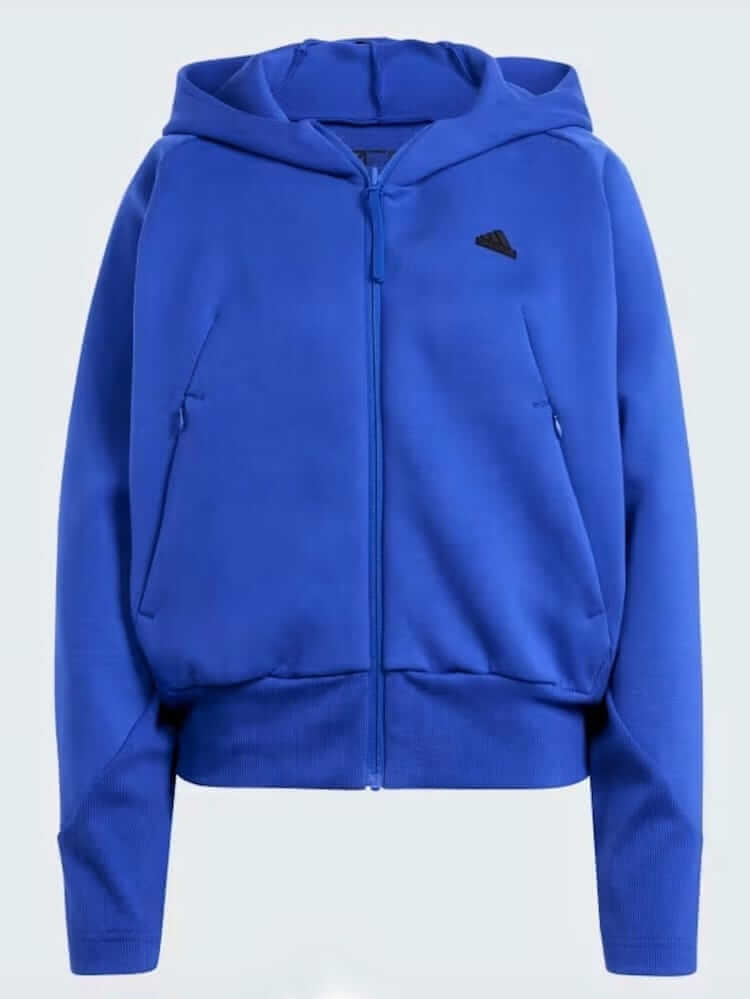
… and these suits are fancy, too, très chic even, so you will not look like a slouch. Because that, too, is important in Mediterranean countries. But that is a topic that we will leave for another day.
Next week, we will invite you to Compare The Mercats with us. Simples!


